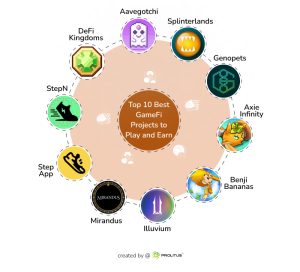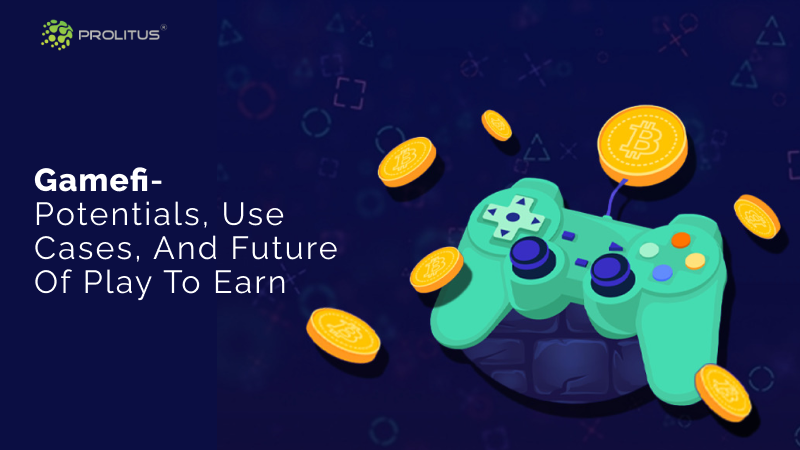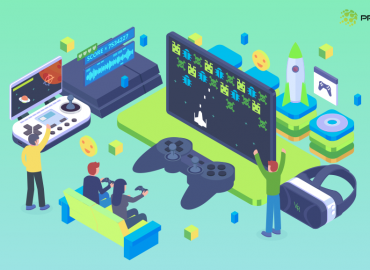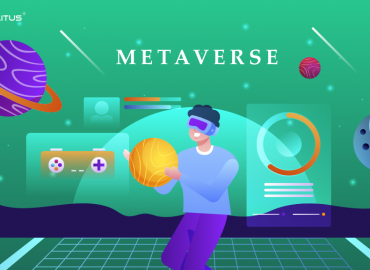The gaming industry and the decentralized financial sector are coming together to form GameFi, which is gaining much interest from the blockchain and DeFi communities.
GameFi is reshaping how players and investors interact with digital experiences and online games by bringing together several appealing themes under one umbrella. These themes range from being able to own property to making money by just playing a player’s favorite game.
You should look into GameFi more if you want to take advantage of its continued leadership in the race to develop technological advances that are reshaping the gaming industry.
What exactly is GameFi?
The name “GameFi” is derived from the combination of the words “game” and “finance.” GameFi combines blockchain technology, including non-fungible tokens (NFTs), cryptocurrencies, decentralization, and advanced gaming mechanics. Ultimately, this creates virtual worlds where players can make money by playing games and having fun.
GameFi provides the infrastructure for blockchain games that pay players money for the time and effort they put into playing. This model is more commonly referred to as the “play-to-earn” model. Incentives on the economic front might take the form of tokens, upgrades, avatars, virtual land, and a great deal more. Players are typically rewarded for accomplishing game-related tasks such as creating original content, mining resources, moving through different levels, and combating other players. Some examples of these types of chores include:
GameFi is different from most video games because it lets players earn and store assets inside the game and move those assets between games and platforms. When they do so, gamers also have the opportunity to monetize their experience by exchanging or selling the items they have acquired. To put it another way, in addition to the financial benefits, GameFi allows its users to acquire digital assets that can be used in various kinds of transactions on various platforms.
This is possible because of decentralization and NFTs, which create a new way of owning digital things. Thanks to these two developments, this was previously impossible.
Until recently, video games took place within a compartmentalized and centralized ecosystem controlled by the game makers. As a result, no matter how much time and effort you put into playing your favorite game, in the end, your prized collection of coins, prizes, avatars, weapons, and other assets was never truly yours and ultimately had no value in the real world. This was true regardless of how dedicated you were to the game. GameFi and play-to-earn have allowed a player-centered economy to grow by giving users real ownership over the gaming items they’ve earned by playing.
This development is not something that should be laughed off in any way. On the contrary, because the blockchain gaming industry experienced an astounding growth of 2000% between the previous year and the first quarter of 2022, with billions of dollars flowing into this market sector, developers’ use of blockchain technology is also driving a wider market expansion. Forecasts show that the industry will expand by a factor of two over the next decade, reaching $545.98 billion by 2028.
Now that you are familiar with GameFi, let’s take a closer look at how the platform operates.
How Does Gamefi Function?
In GameFi, the reward may take the form of virtual currency or an in-game asset, such as a piece of virtual land, an avatar, a weapon, or a costume. Other possible forms include cryptocurrencies. Each individual GameFi project will implement its own unique model and in-game economy. Most of the time, the in-game assets are non-fungible tokens (NFTs) running on the blockchain. This means that they are tradeable on NFT marketplaces. However, there are some circumstances where the in-game assets must first be transformed into an NFT before players can trade or sell them.
Most of the time, the in-game assets give players certain advantages, which increase their chances of getting rewards. But some games also have avatars and cosmetics just for looks that don’t change how players play or how much money they make.
Players can earn rewards by completing tasks, fighting with other players, or building structures that can be sold on their plots of land. These opportunities vary depending on the game. Players of certain games can also generate passive income even when they are not actively participating in the game itself. This can take the form of staking or lending their gaming assets to other players. Let’s look at a few of GameFi’s more widely used components.
Components of GamiFi
Blockchain
GameFi uses blockchain technology to create a trustless network where gamers can securely trade games, items, and funds. With blockchain technology, GameFi is able to create a tamper-proof record of all transactions. This means that users can be sure that their games, items, and funds are safe and won’t be stolen or hacked.
Overall, GameFi and blockchain are both revolutionary technologies that have the potential to change the gaming industry for the better. They offer a more secure and transparent user experience while creating opportunities for new business models and partnerships.
Play to Earn Model
GameFi projects and the play-to-earn gaming mode go together like peas in a pod. The center of the GameFi universe is P2E, and the two can’t be split up. In older video games, like “God of War,” players had to put in a certain amount of money before starting to play. Financial benefits are hardly noticeable in this arrangement. The gaming entities are in charge of and are the owners of the in-game items that players buy. The assets are lost when a player leaves a game, or the corporation stops offering it.
Users are enriched by play-to-earn games‘ seamless integration of earning and gaming. Users have several ways to make more money, and the in-game items they buy are theirs to keep. Every GameFi project adheres to a particular ownership and reward structure. Understanding the project’s working system is the participant’s responsibility.
The ability to immerse yourself in the game and begin earning without paying any money is an appealing element of P2E games. This is the usual way, but some GameFi portals require players to buy NFTs or cryptocurrencies first. Because of this, you should always be careful when working on a GameFi project.
Decentralized Finance
Many game developers want to add decentralized finance (DeFi) elements to their projects to make them more liquid, secure, and profitable. These include yield farming, liquidity mining, and staking. Yield farming is a process where investors use algorithms to identify which games have the highest potential for profitability and invest in them accordingly. Liquidity mining extracts value from games by buying and selling tokens on secondary markets. Lastly, staking is a type of investment in which users lock up tokens to get rewards based on how many tokens they hold. These techniques can provide stability and security for investors and increase developers’ yields.
Top 10 Best GameFi Projects to Play and Earn
To help you on the quest to to find the best Play to earn games, we have compiled a infographic of the most promising projects in GamesFi. Although there are multiple games available in the market but these are some of most promising projects right now. to aid you in your search for the ideal project to start investing in top GameFi games. Check it out!

Future of GameFi
Compared to the traditional game genres that came before it, GameFi has created a revolution by integrating DeFi, NFT, and blockchain technology components. As a result, several “giants” in the traditional gaming industry have announced their intentions to develop into GameFi. These “giants” include companies such as Ubisoft, Square Enix, Epic Games, and others.
According to estimates provided by DappRadar, there are currently 1.09 million people playing blockchain games on a daily basis (as of February 13, 2022). Meanwhile, according to Footprint Analytics, 1.03 million people are using GameFi every day (as of February 13, 2022). That is a significant amount.
In the years to come, there will be an increase in the number of GameFi projects launched because there is still a massive untapped market of gamers capable of transitioning from traditional games to monetary games. A more developed and popular future for GameFi, more original game content, and most importantly, a more sustainable in-game economy are all things that we can look forward to.
Why Chose Prolitus for your GameFi Development?
Prolitus is a Leading Play to Earn Game Development Company . We are committed to delivers a world-class blockchain gaming platform with exceptional, first-rate functionality and cutting-edge security that gives gamers the best NFT gaming experience conceivable. Based on your business requirements, we create your ideal gaming platform, which includes all types of NFT game elements, a technological stack, API integration, development work, and more.
If you are planning your next venture into blockchain development and Gamefi is top on you mind, connect with us today and let our experts build a scalable GameFi platform.





